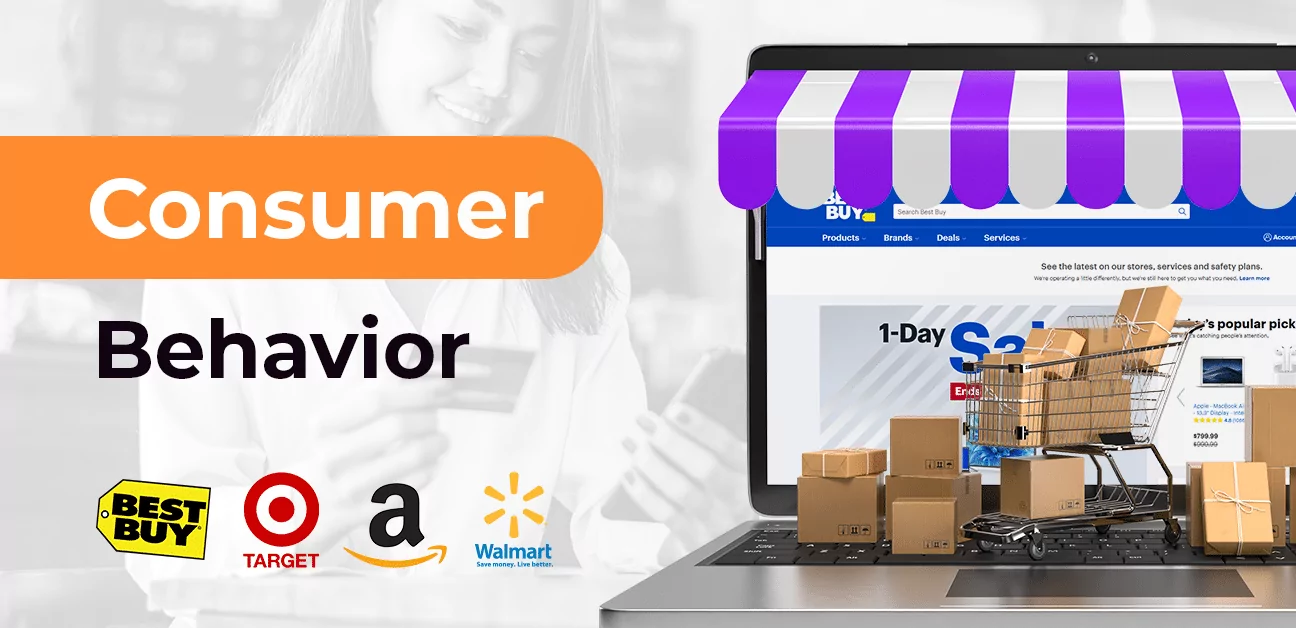E-commerce has revolutionized the way people shop, offering unparalleled convenience and accessibility. However, with the growing competition in the online marketplace, understanding consumer behavior has become crucial for businesses looking to stand out. By analyzing how customers think, decide, and act during their online shopping journey, e-commerce businesses can tailor their strategies to meet consumer needs, drive engagement, and boost sales.
In this article, we’ll explore the key factors that influence consumer behavior in e-commerce and provide actionable insights to help businesses thrive in the digital marketplace.

1. The Psychology of Online Shopping
Online shopping is not just about transactions—it’s a psychological experience influenced by emotions, habits, and cognitive biases.
Key Psychological Drivers:
- Convenience: The ability to shop anytime, anywhere is a significant motivator for online consumers.
- Instant Gratification: Features like fast delivery and easy returns appeal to consumers’ desire for quick solutions.
- Perceived Value: Discounts, free shipping, and bundles enhance the perceived value of a purchase.
Example: Amazon’s “Buy Now” button capitalizes on convenience and instant gratification, streamlining the purchasing process and reducing decision fatigue.
Actionable Insight:
Simplify the customer journey by offering intuitive navigation, clear calls-to-action, and streamlined checkout processes.
2. The Role of Personalization
Personalization has become a cornerstone of successful e-commerce strategies. Consumers expect tailored experiences that cater to their preferences and needs.
How Personalization Influences Behavior:
- Product Recommendations: AI-driven suggestions based on browsing history and past purchases encourage additional sales.
- Targeted Marketing: Personalized emails and ads resonate more with consumers, increasing click-through rates.
- Dynamic Content: Customized landing pages and offers create a sense of exclusivity.
Example: Netflix’s recommendation engine keeps users engaged by suggesting content based on their viewing habits.
Actionable Insight:
Invest in data analytics and AI tools to deliver personalized experiences, from product suggestions to targeted promotions.
3. Trust and Security
Trust is a critical factor in e-commerce. Consumers are more likely to purchase from platforms that prioritize their security and provide a sense of reliability.
Building Consumer Trust:
- Secure Payment Options: Displaying trusted payment gateways (e.g., PayPal, Visa Secure) reassures customers.
- Transparent Policies: Clearly outline return, refund, and privacy policies to build confidence.
- Customer Reviews: Positive reviews and testimonials act as social proof, reducing hesitation.
Example: E-commerce platforms like Etsy prominently feature seller ratings and customer reviews, enhancing trust in their marketplace.
Actionable Insight:
Incorporate trust signals, such as SSL certificates, badges, and verified reviews, to reassure customers throughout their shopping journey.
4. The Influence of Social Proof
Social proof significantly impacts consumer behavior by leveraging the opinions and actions of others to influence decisions.
Types of Social Proof in E-Commerce:
- Ratings and Reviews: High ratings and detailed reviews encourage purchases.
- User-Generated Content (UGC): Photos, videos, and testimonials shared by customers add authenticity.
- Popularity Indicators: Tags like “Bestseller” or “Trending Now” create a sense of urgency and credibility.
Example: Fashion retailers like ASOS showcase user-generated photos of customers wearing their products, fostering trust and relatability.
Actionable Insight:
Encourage customers to leave reviews and share their experiences on social media to enhance social proof.
5. Pricing and Promotions
Pricing strategies and promotional offers have a direct impact on consumer decision-making. The way prices are presented can significantly influence perceived value.
Effective Pricing Strategies:
- Anchoring: Displaying original prices alongside discounted prices highlights savings.
- Free Shipping: Many consumers abandon carts due to unexpected shipping costs. Offering free shipping can reduce this friction.
- Limited-Time Offers: Creating urgency with time-sensitive deals encourages impulse buying.
Example: Platforms like Groupon use countdown timers for deals, creating a sense of urgency and driving quick decisions.
Actionable Insight:
Experiment with pricing strategies and promotional offers, and use A/B testing to determine what resonates most with your audience.
6. The Role of Mobile Shopping
With the increasing use of smartphones, mobile shopping has become a dominant trend in e-commerce.
Mobile Shopping Behaviors:
- Multi-Device Usage: Many consumers start their journey on one device (e.g., desktop) and complete it on another (e.g., mobile).
- Convenience-Driven: Mobile apps with easy navigation and quick checkout processes enhance the shopping experience.
- Social Commerce: Platforms like Instagram and TikTok allow users to shop directly through posts and videos.
Example: Shopify stores optimized for mobile devices see higher conversion rates due to seamless user experiences.
Actionable Insight:
Ensure your website is mobile-friendly, with responsive design, fast load times, and simplified navigation for on-the-go shoppers.
7. The Impact of Social Media
Social media platforms are integral to e-commerce, influencing consumer behavior through advertising, influencer marketing, and direct engagement.
How Social Media Drives Behavior:
- Product Discovery: Social media ads and influencer endorsements introduce new products to consumers.
- Engagement: Direct interaction with brands via comments and messages builds stronger connections.
- Shoppable Features: Platforms like Instagram and Pinterest offer shoppable posts, enabling instant purchases.
Example: Brands like Glossier use Instagram to showcase their products through relatable content and customer stories.
Actionable Insight:
Leverage social media advertising and partner with influencers to reach your target audience and drive conversions.
8. The Power of Convenience
Convenience is one of the top factors influencing consumer behavior in e-commerce. Customers value experiences that save time and effort.
Enhancing Convenience:
- Streamlined Checkouts: Offer guest checkout options and multiple payment methods.
- Easy Returns: Simplify the return process with prepaid labels and clear instructions.
- Subscription Services: Provide recurring delivery options for frequently purchased items.
Example: Amazon’s one-click purchasing and subscription services like “Subscribe & Save” enhance convenience and build customer loyalty.
Actionable Insight:
Identify friction points in your customer journey and eliminate them to provide a hassle-free experience.
Conclusion: Understanding and Adapting to Consumer Behavior
Understanding consumer behavior in e-commerce is the foundation of a successful online business. By recognizing the psychological drivers, prioritizing personalization, and addressing factors like trust, social proof, and convenience, businesses can create engaging and effective shopping experiences.
The key is to remain adaptable. As consumer expectations and technology evolve, continuously analyzing and responding to customer behavior will keep your business ahead of the competition. By putting the customer at the center of your strategy, you can build loyalty, increase sales, and achieve long-term success in the dynamic world of e-commerce.
Discover more from Personal Blog of Richard Tong
Subscribe to get the latest posts sent to your email.




